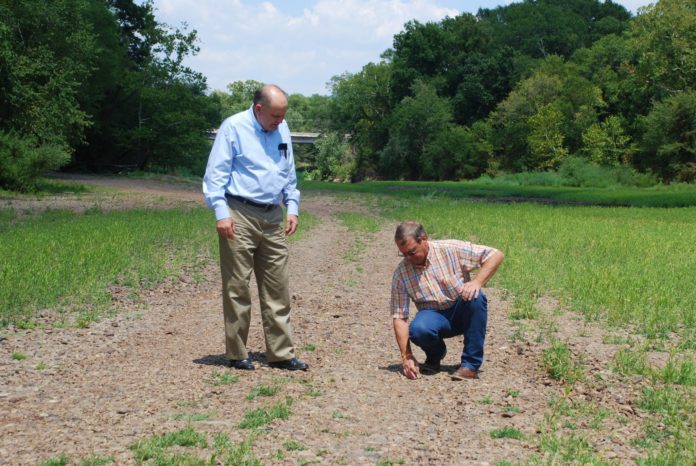BY BRIAN RENEGAR
 After a second meeting of the Joint Legislative Water Committee, I feel that it is important to give an update on what is going on at the Capitol. The first meeting on Aug. 17 was on Oklahoma water law, federal water law, and tribal water.
After a second meeting of the Joint Legislative Water Committee, I feel that it is important to give an update on what is going on at the Capitol. The first meeting on Aug. 17 was on Oklahoma water law, federal water law, and tribal water.
There was an obvious absence of any representatives of the 39 Indian tribes in the state. There was a letter sent to the tribes AFTER this first meeting requesting their involvement in the water plan discussions, but the barn door was shut after the horse was gone.
The end result was the lawsuit filed by the Choctaw and Chickasaw Tribes. The governor and the Legislative committee leadership did not show concern for the Tribes being at the table until the lawsuit was filed.
Fast forward to Aug. 31 when the Oklahoma Water Resources Board presented the technical aspect of the water plan to the Water Committee. The legislative committee of which I am a member has been given a cascading amount of literature to read. I sincerely feel that they did not think we would be able to get past this large volume of information and really get to the meat of the matter.
In the OWRB plan, the state was broken down into 13 different regions with most of my district being in the Southeast Watershed Region and, of course, we were one of the water abundant areas. However, the report did go on to say that in 2060, alternate water supplies will be needed for those people not having access to reservoirs.
The most interesting region was the Central Watershed Region; this region starts in northwestern Oklahoma in Woods County and extends southeast to Hughes County and northeast to Creek County. There are parts of 14 counties in this region with Oklahoma City being in the epicenter.
The most important piece of information in this report is on the demand side. This water plan states in black and white that there will be a demand in these additional 14 COUNTIES. In the year 2060, the need will be an additional 107,250 acre-feet of water!
The real significance here is that the Oklahoma City Water Trust Authority has a water permit application on file with the OWRB for 137,000 acre feet from Lake Sardis, which is about 87% of available water in Sardis.
There is also an absence of an ecological report on the effects of taking that large amount of water out of both the Kiamichi River and the Red River.
It appears OKC wants to be the Water Czar of Oklahoma. Remember OKC and 14 counties will only need 107,250 in 2060, but OKC wants 137,000 now!
And just so people won’t think that I am a southeastern Oklahoma water hoarder, I have even graver concerns for the Oklahomans who live in the Panhandle.
The last aquifer study of the Ogallala aquifer that serves the Panhandle was last done in the late ‘90s. OWRB Director J.D. Strong told me that the OWRB was going to request $1.1 million a year for the next five years to study aquifers of Oklahoma.
A Kerr Foundation study shows the Ogallala is rapidly being depleted in the panhandles of both Texas and Oklahoma. On top of that, T. Boone Pickens has bought water rights to numerous parcels of land in the panhandle of Texas.
With Texas’s right to capture statute, the depletion will increase exponentially.
On the supply side of the Comprehensive Water Plan, the major flaw in determining supply or surplus of water in Oklahoma is the lack of U.S. Geological Survey stream gauges. Also, only 16% of the streams and rivers in Oklahoma were studied.
The Water Committee has met twice and has much more work to do.
– The author, a McAlester Democrat, represents District 17 in the Oklahoma House of Representatives and serves on the joint House-Senate water committee
Editor’s Note: The next meeting of the special water committee is Sept. 21 at the state Capitol.
Photo: State Sen. Jerry Ellis, D-Valliant, [left] and state Rep. Brian Renegar survey the drought’s impact on the Kiamichi River’s dry creek-bed on July 27. Normally, that portion of the scenic waterway would be three-feet-deep and 100-yards-wide with fast-moving water.







